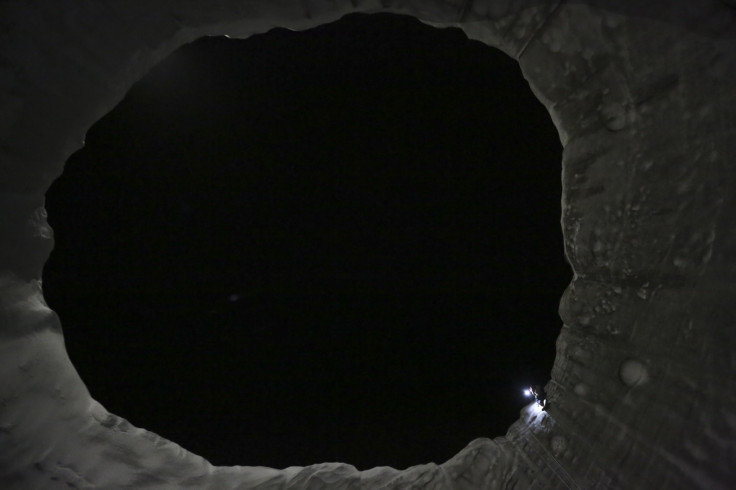Siberia Yamal peninsula mystery crater has 20 baby craters

Satellite images of the Yamal peninsula in Siberia show that a recently discovered crater in the region is not alone, but surrounded by 20 recently-formed mini-craters.
Appearing 30km from Gazprom's Bovanenkovo gas field, the craters are being linked to gas emissions from beneath as also a possible massive explosion.
The images show two potentially dangerous objects, where the gas emission can occur at any moment.
Until now, only three large craters were known about in northern Russia. None of these were seen in earlier satellite images, showing they are a recent occurrence.
Two of the newly-discovered large craters, or funnels, have turned into lakes, said Professor Vasily Bogoyavlensky, deputy director of the Moscow-based Oil and Gas Research Institute, part of the Russian Academy of Sciences.
"One of the most interesting objects here is the crater that we mark as B2, located 10 kilometres to the south of Bovanenkovo. On the satellite image you can see that it is one big lake surrounded by more than 20 small craters filled with water," he told The Siberian Times.
Seven craters have been found in the Arctic area, of which five are directly on the Yamal peninsula, one in Yamal Autonomous district, and another on the north of the Krasnoyarsk region, near the Taimyr peninsula.
Many small craters filled with water and merged into one big lake, 50 to 100m in diameter.
"This big lake is surrounded by the network of more than 20 'baby' craters now filled with water and I suppose that new ones could appear last summer or even now. We now counting them and making a catalogue. Some of them are very small, no more than 2 metres in diameter."
The object B2 is now attracting special attention from the researchers who hope to examine it, despite the dangers in close approach.

When the first crater was detected last year, it set off fears and alarm over release of methane from gas hydrates below. Scientists attributed this to a combination of warm surface conditions and geological fault lines below.
A whitish haze from the Yamal lake was said to be gas seeping from the bottom in a process called degassing.
It is still not clear if there was a crater that turned into a lake or the lake forms during some other process. But what was established was the seeping of gas.
Bogoyavlensky has called for "urgent" investigation of the new phenomenon while noting that there may be more craters on Yamal. "We have exact locations for only four of them. The other three were spotted by reindeer herders. But I am sure that there are more craters on Yamal, we just need to search for them. "
According to Bogoyavlensky, the parapet of these craters suggests a mighty underground explosion of gas.
The absence of charred rock and traces of significant erosion due to possible water leaks speaks in favour of mighty eruption (pneumatic exhaust) of gas from a shallow underground reservoir, which left no traces on soil which contained a high percentage of ice, he wrote in an article.
Methane and global warming
A concentration of 5-to-16% of methane is explosive. The most explosive concentration is 9.5%.
The thawing of the permafrost is believed to be the most plausible reason for the appearance of the sinkholes in Yamal.
Nearby in the Kara Sea a permafrost seal is believed to have thawed under warming conditions but permafrost-associated gas hydrates differ significantly from deepwater gas hydrates in several ways.
Hydrates hold as much as 10 times more carbon than the atmosphere. Direct transfer of even a small fraction of this methane to the atmosphere can have catastrophic effects on Earth's climate.
Permafrost is perennially frozen ground occurring in about 24% of the exposed land surface in the Northern Hemisphere and the Antarctica.
Comprising bedrock, gravel, silt and organic material, a thawing of the permafrost could release much of the carbon and methane in the organic remains into the atmosphere, in a warming feedback loop.
Permafrost contains around 1,700 gigatonnes of carbon in the form of frozen organic matter, almost twice as much carbon as currently in the atmosphere, notes the United Nations Environment Programme.
© Copyright IBTimes 2025. All rights reserved.





















